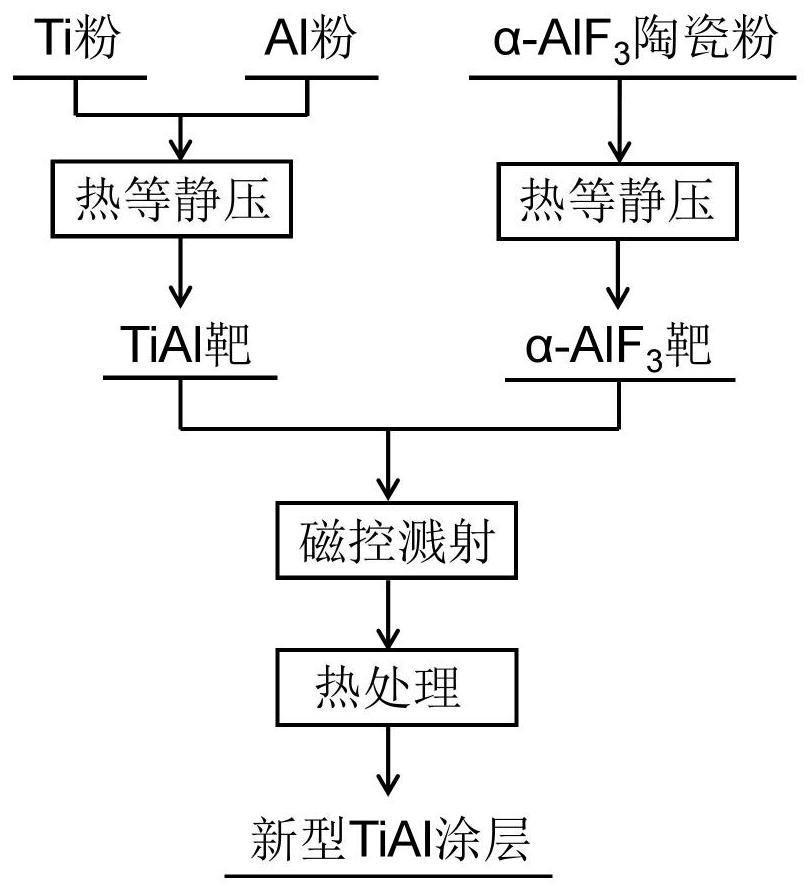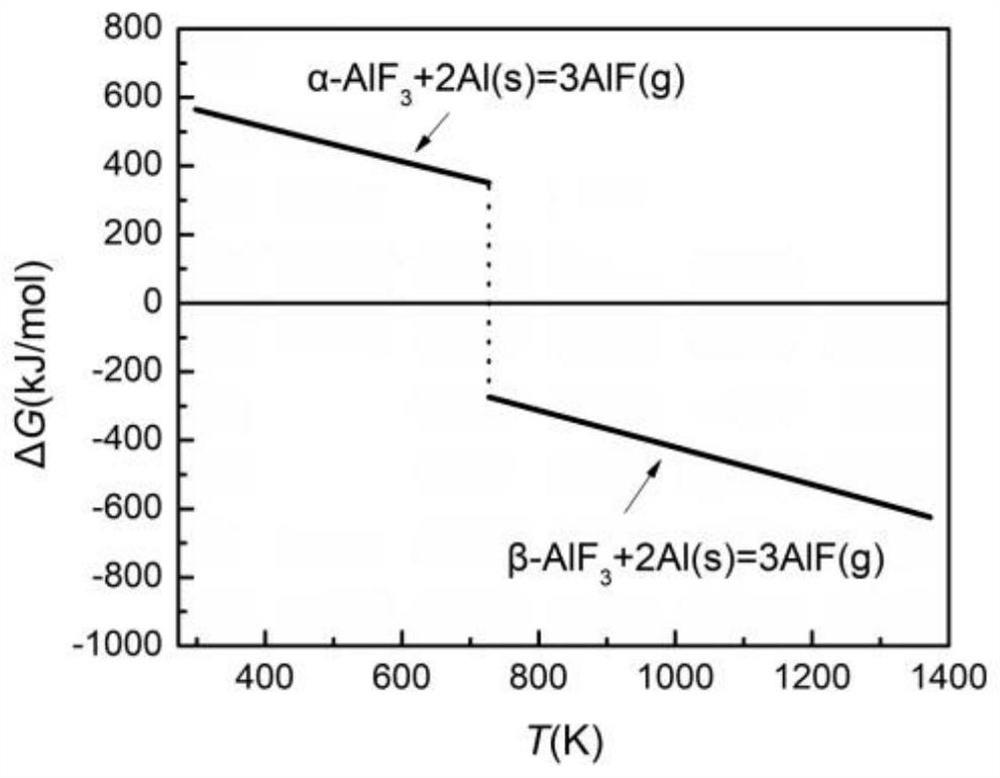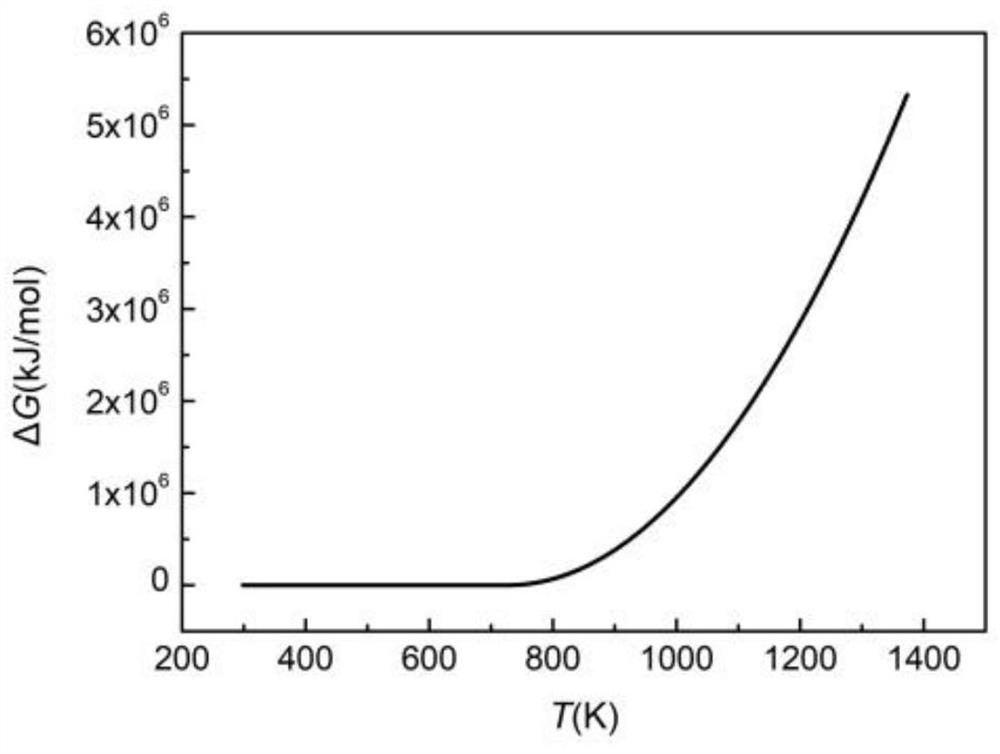TiAl coating capable of improving high-temperature oxidation resistance of titanium alloy and preparation method of TiAl coating
A high-temperature oxidation-resistant, titanium alloy technology, applied in metal material coating process, coating, ion implantation plating, etc., can solve the problems of limited activation of Al, achieve excellent oxidation resistance, improve bonding strength, and the method is simple Efficient effect
- Summary
- Abstract
- Description
- Claims
- Application Information
AI Technical Summary
Problems solved by technology
Method used
Image
Examples
Embodiment 1
[0036] (1) Target preparation:
[0037] Alloying elements are distributed according to the following composition: Al: 40at.%; Ti: balance (all particle size is 44μm), the above powder is mixed in a ball mill tank at a speed of 110r / min for 6h, and then pressed into φ20×3mm by hot isostatic pressing machine 3 TiAl target material, the holding temperature is 1250°C, the isostatic pressure is 160MPa, and the holding pressure is 3h. High-purity α-AlF 3 Ceramic powder (particle size 37μm) is dried and pressed into φ20×3mm by hot isostatic press 3 α-AlF 3 For the target material, the holding temperature is 1750°C, the heat isostatic pressure is 160MPa, and the heat preservation and pressure holding are for 2h.
[0038] (2) Coating preparation:
[0039] The prepared TiAl target and α-AlF 3 The target is installed on the magnetron coating instrument, and the Ti60 titanium alloy substrate after the surface pretreatment (polished with 800# and 1500# sandpaper in sequence, followed ...
Embodiment 2
[0052] Same as Example 1, the difference is that α-AlF 3 The power supply of the target was 0.18 kW.
[0053] The measured coating thickness is 12.4 μm, and the matrix phase Al content in the coating is about 38.7 at.%, AlF 3 The content of nanoparticles is about 25.4vol.% (converted F atom content is 12.1 at.%). Coat the surface of the sample except the coating with high-temperature oxidation-resistant coating, weigh it after drying, then place it in a high-temperature tube furnace, keep it warm at 670°C for 500 hours, and then air-cool it to room temperature. Observe the sample, and the coating has no peeling off , and weighed to obtain the oxidation weight gain per unit area of the coating to be 0.05mg / cm 2 .
Embodiment 3
[0055] Same as Example 1, the difference lies in that the power supply of the TiAl target is 0.6kW.
[0056] The measured coating thickness is 7.3 μm, and the matrix phase Al content in the coating is about 38.4 at.%, AlF 3 The nanoparticle content is about 28.4 vol.%. Coat the surface of the sample except the coating with high-temperature oxidation-resistant coating, weigh it after drying, then place it in a high-temperature tube furnace, keep it warm at 670°C for 500 hours, and then air-cool it to room temperature. Observe the sample, and the coating has no peeling off , and weighed to get the oxidation weight gain per unit area of the coating to be 0.09mg / cm 2 .
PUM
| Property | Measurement | Unit |
|---|---|---|
| thickness | aaaaa | aaaaa |
| particle size | aaaaa | aaaaa |
| particle size | aaaaa | aaaaa |
Abstract
Description
Claims
Application Information
 Login to View More
Login to View More - R&D
- Intellectual Property
- Life Sciences
- Materials
- Tech Scout
- Unparalleled Data Quality
- Higher Quality Content
- 60% Fewer Hallucinations
Browse by: Latest US Patents, China's latest patents, Technical Efficacy Thesaurus, Application Domain, Technology Topic, Popular Technical Reports.
© 2025 PatSnap. All rights reserved.Legal|Privacy policy|Modern Slavery Act Transparency Statement|Sitemap|About US| Contact US: help@patsnap.com



